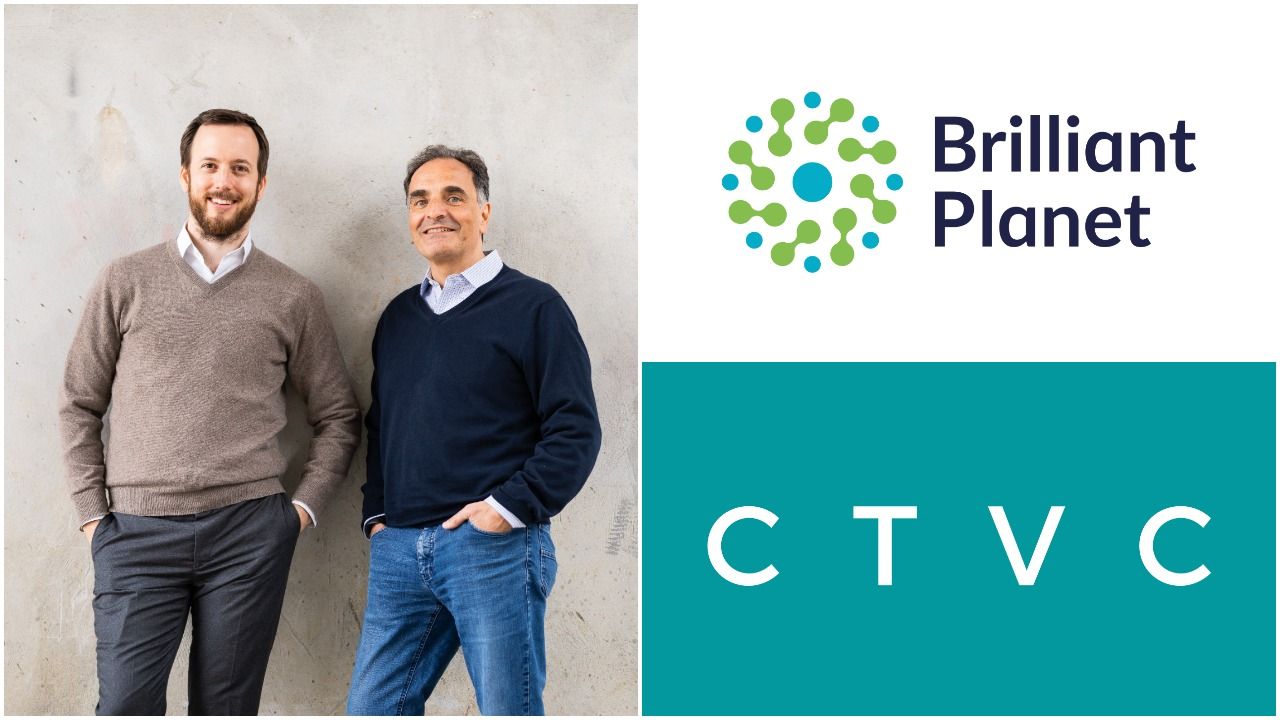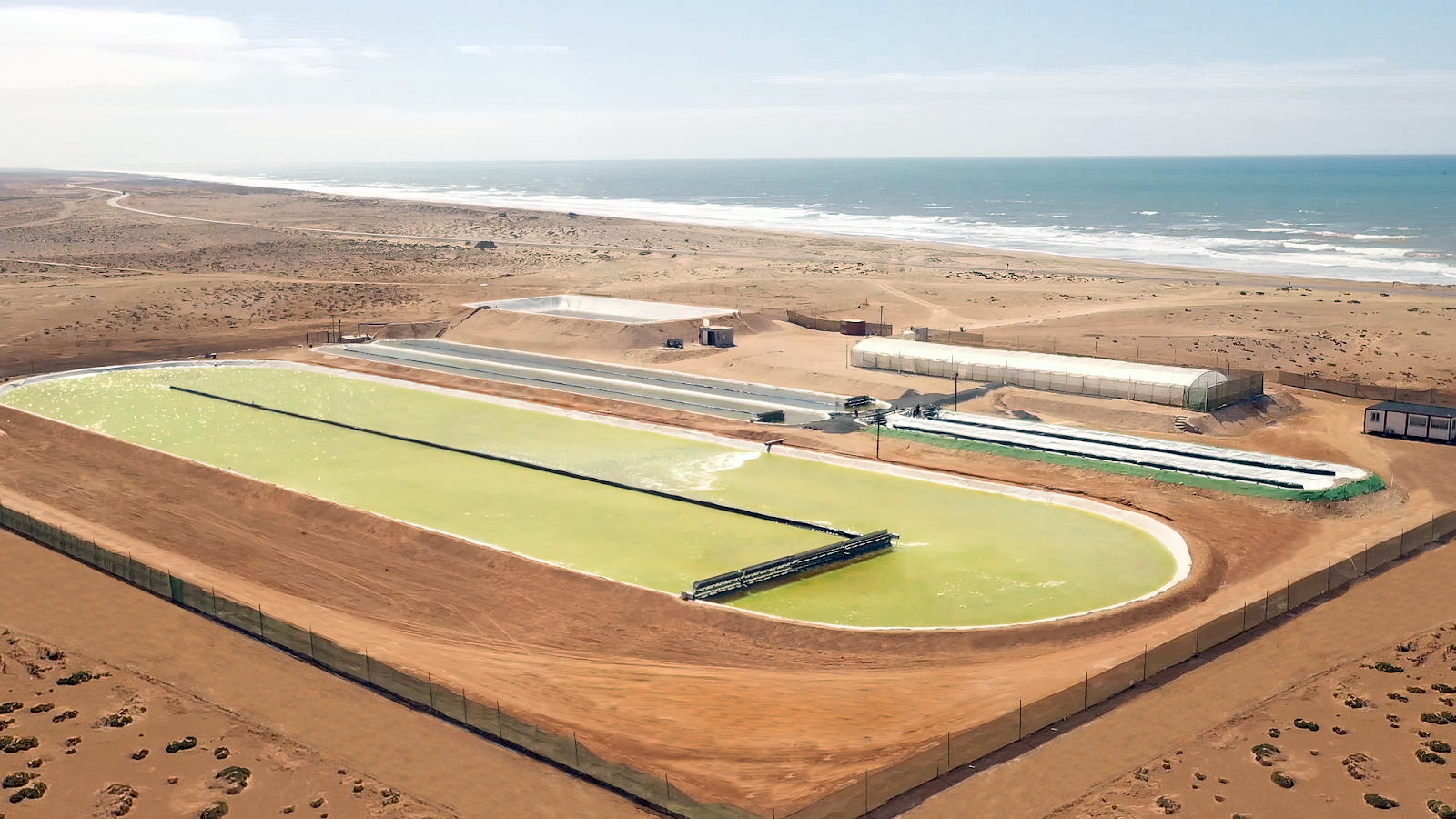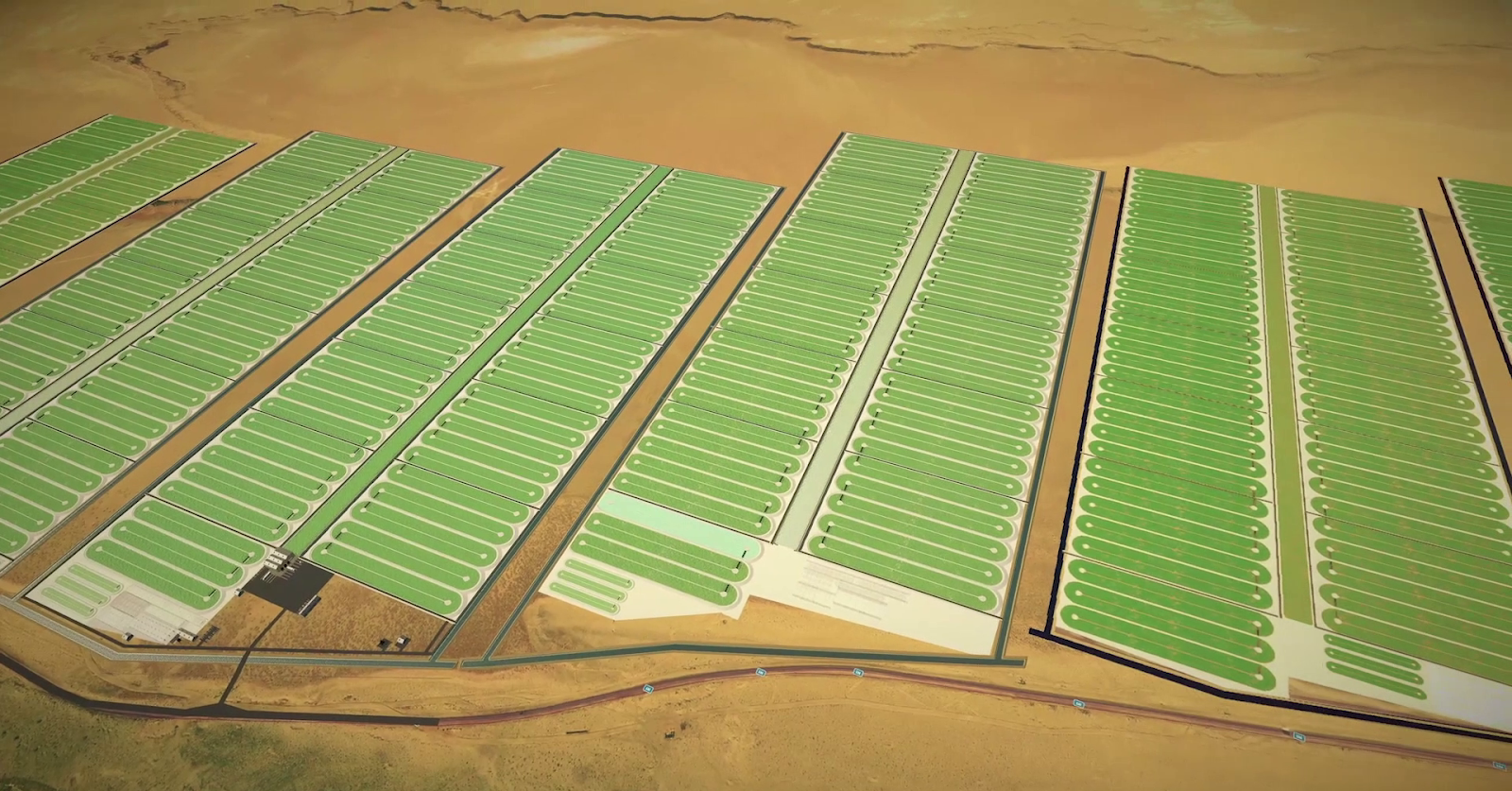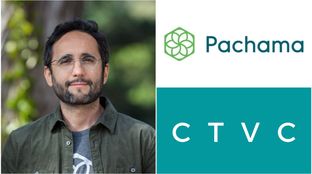
🌎 Get ready with me: Government grants edition 💅💵
A founder’s guide to winning non-dilutive funding with Elemental Excelerator
Harnessing algae’s exponential growth for gigascale carbon dioxide removal

Biofuels were the poster child of Cleantech 1.0’s bust. For the past decade, a team of scientists have been quietly working at the literal edge of the world - where the desert meets the sea - optimizing the ability to harness the growth of algae to suck and sink carbon pollution out of our atmosphere and oceans. Using just seawater and sunlight (alright, and some fancy satellite and filtration technology) Brilliant Planet is coming out of stealth and onto the media stage to shine the spotlight on algae’s carbon removal potential. As USV Climate Fund’s latest investment, Brilliant Planet now has $12m of fresh greenbacks to build a through-and-through green business with a 2 gigaton carbon sequestration potential. We chatted with CEO Adam Taylor on how Brilliant Planet is bringing algae back.
What’s Brilliant Planet’s founding story, and who’s on the team?
My co-founder, Raffael Jovine, founded Brilliant Planet back in 2013. Raffael did his PhD in molecular biochemistry related to algae, then worked at MIT and Woods Hole Oceanographic Institute living and breathing algae for a decade all over the world. During the algae biofuels first cleantech boom, he became fascinated with why it was so expensive for these companies to produce algae when algae grows everywhere, over thousands of kilometers across the ocean. Using his consulting experience Raffael honed in on the problem of containing algae, not growing it. He knew growing algae effectively would need a fundamentally different approach.
Meanwhile, I spent the last 10 years building a vertically-integrated group of aquaculture companies in Sub-Saharan Africa. We grew to span every corner of the value-chain from aquafeed to retail with operations in five countries and 2,000 staff. After a decade in one sector, I was ready for a new challenge - though, as the founder, it’s never easy to step back. Which is when I met Raffael.
Raffael and our team of fantastic scientists had developed a lot of proprietary IP - really fundamental insights into the growth of algae and how to apply that to real-world systems. The time had come for the company to move from R&D to rapidly scaling commercial application, which is where I came in. The decision was easy - I was entirely sold on the mission, climate importance, and fit with my background.
Explain the superpowers of Algae. Why is algae critical to decarbonization?
Algae is the unsung hero of carbon removal: it absorbs about as much carbon as all the plants and trees on land combined. It’s been doing this in the ocean - and now with our technology, it will be able to do this in the desert as well. Algae are inherently more efficient carbon removal machines than terrestrial plants as they don’t need to waste biological resources on building a supporting infrastructure of trunks, roots and branches - their entire surface area is dedicated to photosynthesis. Under the right conditions they’re also exceptionally fast growing. Seasonal algae blooms can transform thousands of square kilometers of ocean into very high productivity systems in just a few days.
How does algae-based CDR stack up against other methods?
We need to employ a whole portfolio approach of simultaneous CDR methods. Fundamentally a good CDR solution needs to be five things: 1) scalable 2) additive 3) quantifiable 4) permanent and 5) affordable. Brilliant Planet is scalable and additive because we operate in vast empty deserts. We’re measurable because we have verifiable physical control of our biomass through to the point of final burial and can measure the carbon content of algae. Meanwhile, nature-based solutions like soil carbon or sunk seaweed come up against this Achilles' heel of measurability.
And then, unavoidably, is cost. Direct Air Capture ticks all the other boxes but it’s inherently an energy-hungry process which makes it expensive. Costs will come down, but it’s unclear where the floor will be and how long it will take to get there. Because Brilliant Planet works with photosynthesis which uses solar power to strip carbon dioxide from the air and free nutrient inputs from seawater, our costs are low. Our strong cost position doesn’t even account for the co-benefits of coastal restoration and economic development in areas that don’t have a lot of other opportunities.
Algae has struggled to live up to its promise as a climate panacea. What’s held back algae climate tech utilization?
Companies of the past grew algae by scaling up a test tube, whereas we’re creating a solution to “scale down the ocean”. In the 2000s a large amount of investment went into highly capital-intensive artificial bioreactors to grow algae for biofuels. These systems were expensive since they required CO2 and nutrients to be pumped in, and fragile because of their complexity - if one pump, motor, or sensor broke the entire facility could crash and need to be cleaned and restarted.
We’ve taken the opposite approach: we operate in stable low density outdoor ponds. Carbon comes from the atmosphere and seawater, and nutrients come from the deep upwelled seawater. Our only material input cost is energy to pump in seawater, but it’s easily provided by a modest on-site solar facility and a small fraction of the amount of energy required by legacy algae systems or today’s DAC systems.
How is your solution different and why is this a good fit for scaling algae?
There are two core innovations to our solution. The first is how to maintain algal bloom physiology - those exceptionally productive periods - all year-round in a natural low-cost system rather than just as seasonal phenomena in the ocean. The second innovation is doing this in the desert. Deserts are large, dry, and barren. Size offers the potential for tremendous scale. Aridity, combined with a very high salt content in our biomass, enables thousand-year permanence for biomass storage (check out the Tarim Basin mummies of the Taklamakan desert as a great example of how desert conditions preserve biomass!) Finally, desert locations make our system economically additive in these rural, low productivity areas.
Walk through your approach to growing algae?

We start by pumping in large volumes of upwelling seawater that is rich in nutrients and carbon. This seawater flows through a series of containers and ponds, where each step is exponentially larger than the last to accommodate the exponential growth of the algae. One beaker of inoculant at the first step quickly grows to fill four 12,000m2 ponds. We then harvest the algae using a fine mesh filter to separate it completely from the purified seawater. We dry the algae in the open air of the desert and, once it has reached the required level of dryness to prohibit biological degradation, bury it 1m to 4m below the desert surface where it will remain stable for thousands of years. Since carbon is the largest component of the algae biomass we are therefore stably storing carbon.
The seawater that is returned to the ocean now has a higher pH since it has been deacidified. This CO2-poor, high-pH (alkaline) seawater can now reabsorb atmospheric CO2 and enable the growth of shell forming organisms. For every unit of water that passes through the system we deacidify the equivalent of 5.1 units back to pre-industrial pH levels.
Reaching this point of effective, low-cost process optimization required intense understanding of algae photophysiology. It’s not viable to deploy hundreds of thousands of dollars of monitoring sensors in every pond. So we developed a very detailed cellular-level digital biology simulation, reliable FVCOM modeling of ocean upwelling, cutting-edge sensor technology for calibration at the site level, and daily satellite imagery. Our digital platform very accurately reacts to the real-time status of the algae with only a few basic low-cost inputs from each pond and public weather information. Commercially, this was the real breakthrough.
Can you spell out how Ocean Alkalinity Enhancement (OAE) works?
Ocean acidification is when the ocean pH drops because excess carbon dioxide forms carbonic acid, like in fizzy drinks. It’s what prevents shelled organisms like clams, mollusks, corals and many others from forming and it deeply disrupts ecosystems. Today the ocean contains 39,000 times more carbon than the atmosphere, because the carbon dioxide is dissolved in the ocean water and balanced there by calcium, magnesium, and other alkaline salts.
Ocean alkalinity enhancement (OAE) is a deliberate effort to raise the pH of the ocean to increase the capacity of the ocean to absorb a larger proportion of atmospheric carbon dioxide. Our approach removes the carbon dioxide from the seawater without removing its natural levels of alkalinity. When we return the discharge water to the ocean, it enables natural shell formation, allows for ecosystems to restore themselves, and also absorbs carbon again without being acidified.
What’s the ideal environment for a facility? How large is the possible carbon sequestration footprint?
The system works well in any coastal desert environment. We’ve operated successfully in the very hot deserts of Oman and the cool winter climate of South Africa. Currently we’re operating in Morocco which is somewhere in between. At each location we start by bioprospecting for suitable local strains of algae. There are a set of parameters we’re looking for in the algae and our team has gotten good at quickly sorting through thousands of samples to find the right one for any given location. The world’s hot deserts are the size of the USA and Europe combined. Using a GIS model to sort for site characteristics, for example flat land, we’ve identified a short-list of around half a million square kilometers of suitable desert. That’s about 2 gigatons per year of carbon removal potential.
What does this look like at gigaton scale?

As two reference points for relative scale: the world produces around 4 gigatons of oil per year. And depending on your assumptions, 1 gigaton of CO2 removal per year generates $1T of revenue. At the gigaton scale we would require a large, but feasible, number of algal-sequestration facilities globally. Our scalable, modular platform has no limiting factors such as chemical inputs or fresh water availability. At the gigaton-scale Brilliant Planet would start to look like an infrastructure technology provider, similar to a solar panel or wind turbine manufacturer. Whether we would only design and license or also build and operate is a question we’ll need to answer a few years down the line. Though it’s clear that we will not own all of these facilities on our own balance sheet. Once the approach is demonstrated at scale, there’s a well-established project finance and asset management ecosystem that annually moves hundreds of billions of dollars to infrastructure projects. In the medium term, we could work with specific corporate offtakers to develop facilities specifically for them. Next year we will start to build a 30-hectare demonstration facility, and then a 1,000-hectare commercial scale facility which will remove 40,000 tons of CO2 per year.
What is your business model and who do you plan to sell to?
We’re currently pre-revenue and are considering whether to pre-sell carbon credits and, if so, when an appropriate time would be. As with other CDR companies, we’ll look to sell into both the enterprise and consumer segments. We’re well positioned with measurability, permanence, etc. to meet the needs of sophisticated corporate buyers that are willing to pay for high quality carbon credits. On the consumer side, the classic considerations of brand resonance, CAC/LTV etc. hold true. It would be natural to issue the consumer credits on a blockchain to enhance the audit trail and allow for an aftermarket. We should be able to automate the blockchain minting process by tying it into our production automation system to achieve a very high level of transparency and verifiability.
How are you thinking about certification?
We will seek to be certified by a major registration certification body and are starting to prepare for the methodology approval. However, several of the larger corporate buyers now have standards that are higher than that of the certification bodies and they have the internal expertise to do it themselves. So, while getting certified is important for us, I actually don't think it's critical. On the consumer side, I think purchase decisions come down to what individual consumers value at the project level. Although, certification is of course a good baseline of credibility.
How does your target price per ton compare to the broader voluntary carbon market?
We can sequester carbon dioxide at around a tenth of the cost of DAC with the same permanence and verifiability. It’s impossible to know exactly how the carbon markets will evolve but I think you’ll see a range of prices based on credit quality rather than one commodity product. I anticipate a great position for us in the $50-$100/ton high quality credit market. That also appears to be a price range that’s economically viable for reputable organizations that need to offset unavoidable emissions or require more time to decarbonize their internal operations.
Congratulations on your $12m Series A, announced earlier this week! Who’s involved, and - most excitingly - what’s next for Brilliant Planet?
The round was led by USV and Toyota Ventures who have both been fantastic to work with. Their approach to the sector and approach to investing in growth companies was exactly what we were looking for. John Buttrick from USV has joined our board, where it’s been a pleasure to engage his deep expertise. Future Positive Capital, S2G, AIIM, and Hatch also participated in the round and together contribute a really broad range of experiences and connections.
What’s next? Closing a round provides a good moment for reflection and celebration of the successes that have brought the company this far. But now the hard work begins! We’re planning to hire 50 roles this year in London across engineering, science, strategy, biz dev, communications, and a broad range of corporate functions. We're delivering on construction-ready designs for the demonstration facility. In parallel, we’re always continuing our fundamental research program - for example, we’ll file a pipeline of 20 additional patents over the coming quarters.
Last thing - we’re being more public about what we’re building at Brilliant Planet because it’s time to get algae on the radar. Everyone talks about planting trees and direct air capture. We believe that algae is the best of both worlds!
Does the thought of carbon-sucking algal blooms make your heart go boom boom? Brilliant Planet is hiring for 50 roles across the company this year in London. In particular, they’re on the lookout for golden ticket candidates with expertise in carbon market strategy and business development. Candidates and customers, reach out here!

A founder’s guide to winning non-dilutive funding with Elemental Excelerator

Infrastructure investing for impact with Banyan Infrastructure's Amanda Li

Venturing into nature with Diego Saez-Gil at Pachama